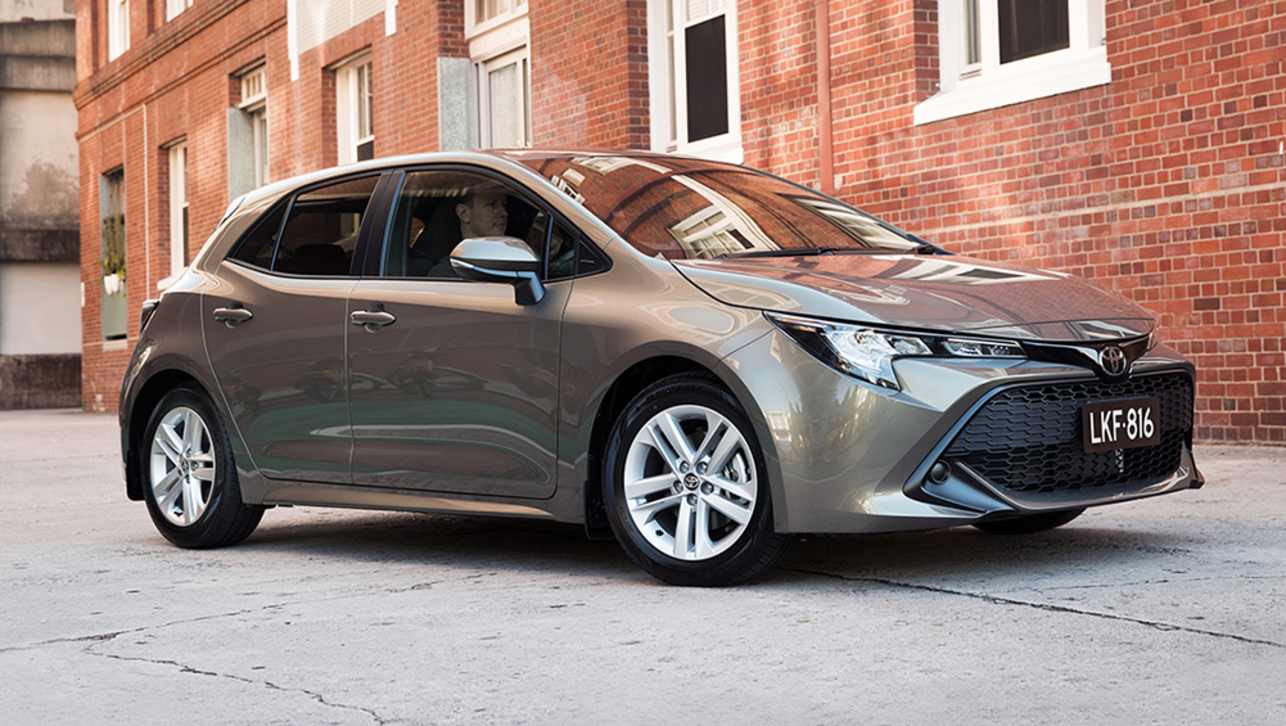In days of yore, when vehicles were simple, it was quite common for men, and women, who liked the feeling of oil on their skin and tools in their hands to do simple car maintenance, like changing oil and filters, themselves.
In the modern world, however, this has become something of an anachronism, partly because oil changes just aren’t required quite as often, and partly because we all just tend to get out cars serviced regularly by professionals.
If you want to change the oil yourself in your Toyota Corolla, however, because you’re a DIY kind of person, you’ll need to know how often to change the oil and the oil filter. You might not want to try and do the whole service yourself, because a mechanic at a service centre is going to be better equipped and know more about your car’s specifications.
As far as changing Toyota Corolla oil goes, however, you’ll need to know what type of oil it needs, and how often to change that oil. Our helpful tables will allow you to work this out, because there are an awful lot of Corollas and things do change over the years and model changes.
What we can tell you in simple terms is that you need to change oil on a Toyota Corolla every six months, or 10,000km, whichever one comes first, and that the instructions for doing so will be in the manual included with your car.
That was the case with Corollas sold right up until last year, and if you’ve got a 2018 model Corolla hatch, you can take it easy, because your oil only needs changing every 12 months or 15,000km.
Your 2018 Toyota Corolla will require 4.6 litres of oil if you’re also changing the oil filter, or 4.3 litres if you’re not.
If you have a 2018 or 2019 Corolla Hybrid you also get the 12 months/15,000km change period, and you’ll need 4.2 litres with the filter or 3.9 litres without.
All Corollas of model years up to and including 2017 will need 4.2 litres of oil with the filter change, or 3.9 litres without.
Obviously Toyota gives you both of those figures because you can choose to replace the filter or not, but it is recommended that you change the oil filter with each oil change.
If I want to change the oil myself, how do I do it?
Here are the details, from our own resident mechanical expert, Iain Kelly:
As with any maintenance task, if you're unsure of completing it successfully, our best advice is to use the services of a professional mechanic. If an oil change isn't done correctly, you risk significant mechanical and financial damage, along with serious safety concerns.
If you're hell bent on giving it a go yourself, the process for changing the oil in a Corolla is the same as pretty much any other car. Look up what grade of oil your car needs and how much oil capacity it has, all of which is listed in your owner's manual, and purchase a brand new oil filter.
Drive the car for approximately 10 minutes to ensure the oil is warm as this makes it easier to drain. Park the car on a level surface, open the bonnet and loosen the oil filler cap so it is just resting on top of the filler tube, then slide a drain tray underneath your engine.
There will be a small flap in the undertray to be undone so you can access the oil drain plug with a ring spanner or socket.
Undo the sump plug with a wrench, being careful not to burn yourself as the hot oil rushes out into the drain tray. Let it drain for 10 minutes, then do up the sump plug with a new washer and being careful not to over-tighten the plug - do it snug, then turn it another quarter-turn.
Slide the drain pan under the oil filter and remove this again being cautious to not splash hot oil on yourself. Before installing the new oil filter check the rubber seal came off with the old filter, then smear a little fresh oil on the new filter's rubber seal before winding it on and doing it up a quarter-turn past snug.
Fill the engine with fresh oil as per the owner's manual. Once you have replaced the oil filler cap and confirmed there is no oil leaking out, start the engine, let it warm up and then check the oil level as per the above procedure.
If you cannot reach under your car to undo the oil filter or sump drain plug, use the factory jacking points recommended in the owner's manual to lift the car off the ground at the front and rear, lifting the front first, and use four weight-rated chassis stands to support the car at the factory recommended support points. Do not use the scissor jack in the boot for this job.
What do I do if the engine oil-pressure-warning light comes on?
This is bad. Not just “oh, there’s a warning light” bad, but quite worryingly bad.
Do not pass Go, do not drive until you find a Toyota dealer. Pull over, stop your car in a safe place and call your roadside assistance provider, Toyota dealer, or your mechanic, for advice, because if the oil pressure is too low you could be about to destroy your engine. And that’s expensive.
Checking the oil level
1. Park the vehicle on level ground. After turning off the engine, wait more than five minutes for the oil to drain back into the bottom of the engine.
2. Hold a rag under the end and pull the dipstick out.
3. Wipe the dipstick clean.
4. Flat dipstick: Reinsert the dipstick fully. Non flat dipstick: Reinsert the non-flat dipstick fully with its protruding areas pointing towards the engine.
5. Holding a rag under the end, pull the dipstick out and check the oil level.
6. Wipe the dipstick and reinsert it fully.
N.B. There are two oil level markings, the one near the end is the 'low' indicator, the one further up the dipstick is the 'full' indicator.
2007 to 2013 Sedan / 2010 to 2013 Hatch and Sedan
| Oil Grade* | |
| 20W-50 and 15W-40 | API grade SL or SM multigrade engine oil |
| 10W-30, 5W-30, 5W-20, and 0W-20 | API grade SL "Energy-Conserving", SM "Energy-Conserving" or ILSAC multigrade engine oil |
2010 - 2013 Sedan / 2012 - 2017 Hatch, Sedan
| Oil Grade* | |
| 0W-20, 5W-20, 5W-30 and 10W-30 | API grade SL "Energy-Conserving", SM "Energy-Conserving" or ILSAC multigrade engine oil |
| 15W-40 and 20W-50 | API grade SL or SM multigrade engine oil |
2010 to current Hatch
| Oil Grade* | |
| 0W-20, 5W-20, 5W-30 and 10W-30 | API grade SL "Energy-Conserving", SM "Energy-Conserving", SN "Resource-Conserving" or ILSAC multigrade engine oil |
| 15W-40 and 20W-50 | API grade SL, SM or SN multigrade engine oil |
2013 to current Sedan
| Oil Grade† | |
| 5W-30 and 10W-30 | API grade SL "Energy-Conserving", SM "Energy-Conserving", SN "Resource-Conserving" or ILSAC multigrade engine oil |
| 15W-40 and 20W-50 | API grade SL, SM or SN multigrade engine oil Recommended viscosity (SAE) |
† If you use SAE 10W-30 or a higher viscosity engine oil in extremely low temperatures, the engine may become difficult to start, so SAE 5W-30 or lower viscosity engine oil is recommended.
2015 to 2018
| Oil Grade* | |
| 0W-20, 5W-20, 5W-30 and 10W-30 | API grade SL "Energy-Conserving", SM "Energy-Conserving", SN "Resource-Conserving" or ILSAC multigrade engine oil |
| 15W-40 | API grade SL, SM or SN multigrade engine oil |
Corolla Hybrid 2016 to current Hatch
| Oil Grade* | |
| 0W-20, 5W-20, 5W-30 and 10W-30 | API grade SL "Energy-Conserving", SM "Energy-Conserving", SN "Resource-Conserving" or ILSAC multigrade engine oil |
| 15W-40 | API grade SL, SM or SN multigrade engine oil |
* Recommended viscosity (SAE): If you use SAE 10W-30 or a higher viscosity engine oil in extremely low temperatures, the engine may become difficult to start, so SAE 0W-20, 5W-20 or 5W-30 engine oil is recommended.
Oil viscosity (0W-20 is explained here as an example):
The 0W portion of the oil viscosity rating indicates the characteristic of the oil which allows cold startability. Oils with a lower value before the W allow for easier starting of the engine in cold weather.
The 20 in 0W-20 indicates the viscosity characteristic of the oil when the oil is at high temperature. An oil with a higher viscosity (one with a higher value) may be better suited if the vehicle is operated at high speeds, or under extreme load conditions.


.jpg)

.jpg)

.jpg)
 copy.jpg)

.jpg)
.jpg)
.jpg)

.jpg)
.jpg)
.jpg)

.jpg)

.jpg)
.jpg)
.jpg)
.jpg)


.jpg)




.jpg)
Comments